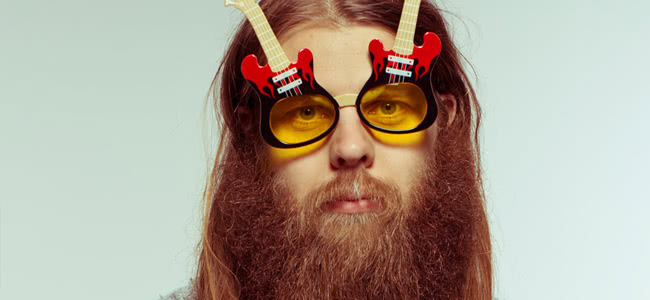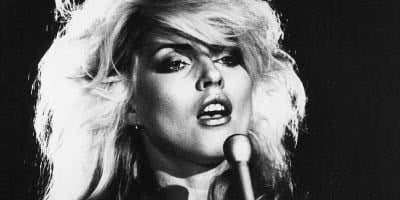“I sort of fell into being a music photographer whilst I was studying photography,” says Kane Hibberd, whom you may know by his moniker, Kanye Lens. If you’ve attended a Soundwave in the past few years, chances are you’ve seen him lurking around with his camera, he’s probably even taken your photo, whether you know it or not.
But for someone who just “fell” into being a music photographer, his career is marked by diligent strategic planning and forethought. He simply can’t afford to act otherwise. “I think if you want to achieve anything badly enough, you can do it.
“But to be successful,” he adds cautiously, “to do something you can create a career out of, it’s going to take more than just being a great photographer. The odds are definitely stacked against you.”
“Being a photographer is hard enough, and then to work in an industry that is still finding its way in a digital market place is even more challenging. Not to mention the size of Australia’s industry.”
“The first thing to consider is you are probably going to be self employed and not everyone has the motivation, drive or business skills to make that work.” Indeed, Hibberd’s life is not one of hanging out with rockstars in between haggling with magazine editors.
“If I’m not shooting, I usually get to the studio between 9-10am and work through till 7pm. If I have to go to a gig that night, I just work through until the gig,” he recounts. “A lot of my time is taken up in post-production. A lot. I spend a lot of time looking at a computer retouching and processing images.”
“Some of my portrait work can take days to retouch depending on the complexity of the image. When I’m not retouching, I’m working on creative and production for upcoming shoots, which can be time consuming. I also try to have a continous presence online by putting up new work and updating my folio.”
“I spend a lot of time listening to new music and reading up on industry news to make sure I know what is going on, who I can hassle for some work. I love finishing a project, sending off those final images and seeing a job well executed. It’s also great seeing where images turn up and how they are used.”
It’s not exactly glamorous, but Hibberd knows how to make it work. Impressive for something he just fell into. “I went back to study not because I wanted to be a music photographer, but because I wanted a different direction in career from being a sound engineer.”
“So at uni I needed subjects for my assignments, and since a lot of my friends were in bands, I started photographing them and some of those shots started getting used for press and it sort of happened from there.”
Hibberd has now been shooting music for 10 years. His first gig was a performance by Something With Numbers at The Espy. “A friend of mine asked if I wanted to come and he could put me on the door and I thought, why don’t I bring my camera along and I was hooked,” he recounts.
Looking back on a decade-long career, Hibberd has many proud moments to treasure. “I think independently publishing my book, Kanye Lens Vs Soundwave, was a pretty big achievement. Having the cover of two Rolling Stone magazines was also pretty cool.”
“As well as putting on my first solo exhibition in Sydney and Melbourne back in 2011 and seeing people turn up was also very satisfying. As good as those achievements are, I think the best is still yet to come. I’m working on a project which will hopefully become my proudest moment yet.”
Part of what’s made Hibberd so successful is his understanding that focusing on your passion can’t come at the expense of acknowledging the business side of things. “I’m also a small business owner so I have to do all the boring business based admin stuff like paying bills, generating work, marketing and networking etc,” he explains.
“Obviously creating the best imagery you can is the primary focus, and need to have a real love for what you do as there are easier ways to make money in other areas of photography,” he adds. “But what makes it a job and not just a hobby is being able monetize your work.”
“With so many people keen to take pictures for the love of the artist and the hobby, it’s sometimes hard for people to accept they need to pay for the use of images, not just be given them for free. So having some business skills is also very important.”
Naturally, it also helps to get along with people. “I think working with artists requires a down to earth, relaxed personality,” says Hibberd. “You often don’t get a lot of time with shooting portraiture so you need to be able to make a person feel comfortable and relaxed in a short amount of time.”
“A lot of artists also don’t like (or are over) being photographed, so to make a shoot as quick and as easy possible helps. With touring with an artist, again I think it takes an easygoing, friendly personality with a good attitude.”
“You are around people 24/7 so having an attitude and not getting along with everybody will quickly see you build a bad reputation and the music industry is small so it won’t take long before you become that punishing photographer.”
[include_post id=”254068″]
However, Hibberd’s best advice is more philosophical. “Be patient, if you continue to do great work, run your own race, be innovative and take some calculated risks, you will continue a steady upward trajectory,” he insists.
“It’s not going to happen overnight but then a career shouldn’t. It should take your whole career to have a successful career. As corny as it sounds, it’s about the journey not the end.”
Staying true to his down to earth nature, Hibberd has nothing but optimism for the future of the music business in Australia. “I think it’s an exciting time, it’s ever evolving and still a little unpredictable, which allows for innovation.”
“I think because of technology we are never going to go back to a time where there is one main business model. Australian music is seeing another wave of new artists being embraced internationally and hopefully this well see some support flow back into our local scenes.”
“I think festivals or gatherings, are going to change to more a boutique experience on a smaller scale. Rather than 50,000 people going to see a headliner that tries to appeal to them all, we will see smaller festivals emerge that cater to 3-5k that can put on a solid lineup that appeals to a niche market and don’t need to pay a fortune for an international headliner.”
“I feel like the tide is turning for people returning to paying for their music… And for a music photographer, the more money, the artist, promoter, label is generating, the better budgets and more money is filtered back down for our work.”
If you’re interested in becoming a music industry professional, visit www.aim.edu.au to explore the huge range of music industry courses they have to offer.



































